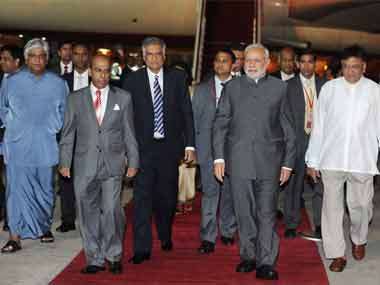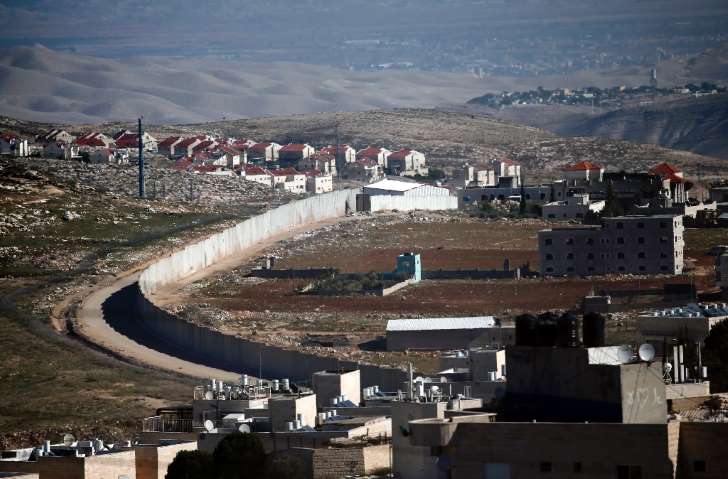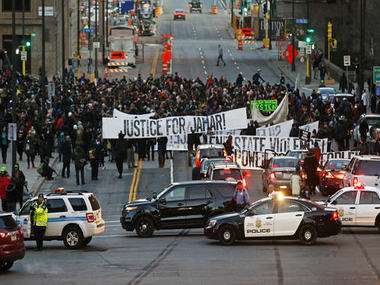March 21, 2015
Jaffna/Colombo/New Delhi: The most stunning and bizarre thing that I sensed – repeat 'sensed' – during my brief stay in Sri Lanka last week was that Prime Minister Narendra Modi's security, during his visit to the island nation on 13-14 March, was riddled with loopholes.

March 21, 2015
Jaffna/Colombo/New Delhi: The most stunning and bizarre thing that I sensed – repeat 'sensed' – during my brief stay in Sri Lanka last week was that Prime Minister Narendra Modi's security, during his visit to the island nation on 13-14 March, was riddled with loopholes.

In fact, I got a feeling that PM Modi was a sitting duck target for terrorists of whatever hue and ideology.
PM Modi stayed in Taj Samudra, the iconic five-star hotel in Colombo during his visit. Practically, he was in the hotel on 13 March, the date when he had all his meetings with his Sri Lankan interlocutors in Colombo and spent one full night in the hotel.
The media personnels stayed in the Ramada Hotel which is bang opposite Taj Samudra, a distance of few minutes on foot.
My first impression of unusually loose security arrangements in Taj Samudra came to the fore on 13th morning when I walked into the Media Centre within the premises of the hotel. I walked unhindered, unchecked and unfrisked several times to the Media Centre on the ground floor on the day when Modi was staying in Taj Samudra.
Gun-toting security men were deployed all over. But none stopped me as I trotted my way to the Centre. Nobody frisked me or asked me to show my identity.
Worse, there were no manned gates for checking the interiors of a vehicle gaining entry into the VVIP hotel premises which is the norm in any five-star hotel in New Delhi irrespective of the fact whether any VVIP is staying in that hotel or not.
There were no collapsible tire-puncturing devices which one sees routinely in all high-security government buildings in New Delhi, including Parliament House.
Several times I walked from the Media Centre to the lobby of c where PM Modi and his entourage arrived, either to get dropped or get picked up. But there was no frisking or checking.
Any suicide bomber could have reached up to this point without being challenged even for once. This alone constituted a a serious lapse in security arrangements of the visiting Indian Prime Minister in a country which has seen more suicide bombings and assassinations of top leaders than any nation in the history of contemporary world.
But worse was yet to follow. It was in Jaffna on 14 March. PM Modi appeared at several public places in the northern Sri Lankan city which till about six years ago served as the capital of the Liberation Tigers of Tamil Eelam (LTTE).
Modi's last public function on Sri Lankan soil was at a village, some 16 kilometers away from the Jaffna city. He travelled by road. Apparently, the road was newly constructed. Common men, women and children thronged both sides of the road. The roadside markets were open.
Armed security personnel were deployed throughout, but they could not have prevented a lurking terrorist from firing from a sniper rifle or a telescope gun (as one sees in Hollywood or Bollywood movies) as the markets were open and movements were not banned.
The scene at the village where PM Modi was present for over half an hour in a tent visible from all sides was even more chaotic. Security personnel thronged the entire area but there was hardly any access control.
Most importantly, a wannabe assassin did not have to get anywhere close to the venue, irrespective of how good or bad the proximate security arrangements were for the simple reason that a Rocket Propelled Grenade (RPG) attack could have 'covered' the entire tent house Modi was in for a long time!
Incidentally, the venue was just about a hundred meter away from the sea and there were no signs of maritime patrolling or surveillance aircraft hovering overhead.
The Indian Express, too, carried a report touching upon security aspects of PM Modi's Jaffna visit.
While this writer in is no position to talk about the points mentioned in this report, it points a finger at the security arrangements for PM Modi in Jaffna.
The scene at this Jaffna venue reminded this writer of the wafer-thin security arrangements for the then prime minister Rajiv Gandhi during the general election campaign in 1991 in at least two of his public meetings that this writer had covered as a reporter: one near AIIMS in Delhi and the other in Amroha, Uttar Pradesh. Rajiv Gandhi's Amroha public meeting took place very close to his fateful appearance at Sriperumbudur, Tamil Nadu, on 21 May 1991 where he was eventually assassinated.
National Security Advisor Ajit Doval was himself present at PM Modi's Jaffna meeting. It will be a good idea if Doval's views on security arrangements during Modi's public function at Jaffna on 14 March could be brought to public domain.
One hopes that the Indian security establishment orders a thorough review of PM Modi's security during his recent visit to Sri Lanka, if it has not done so already.
The nation cannot afford to let its Prime Minister come to any harm.
India as a nation still does not seem to have learnt its lessons in protecting its top leaders even after losing a sitting prime minister (Indira Gandhi) and a former prime minister (Rajiv Gandhi) to terrorism.
Courtesy: FirstPost
















































































































